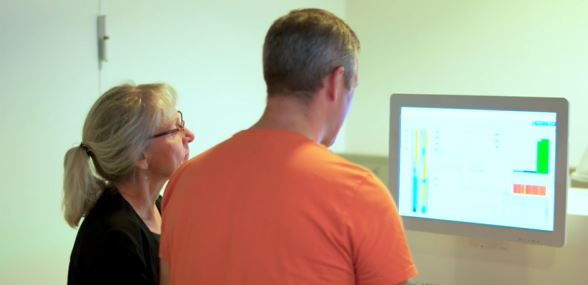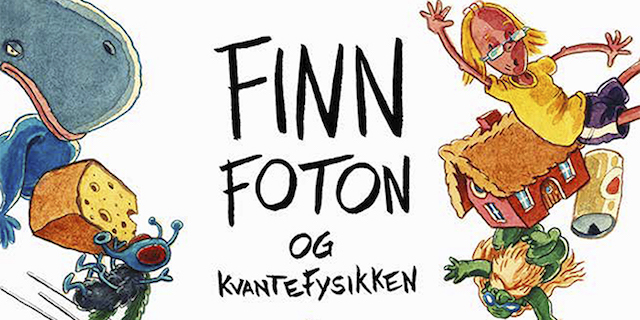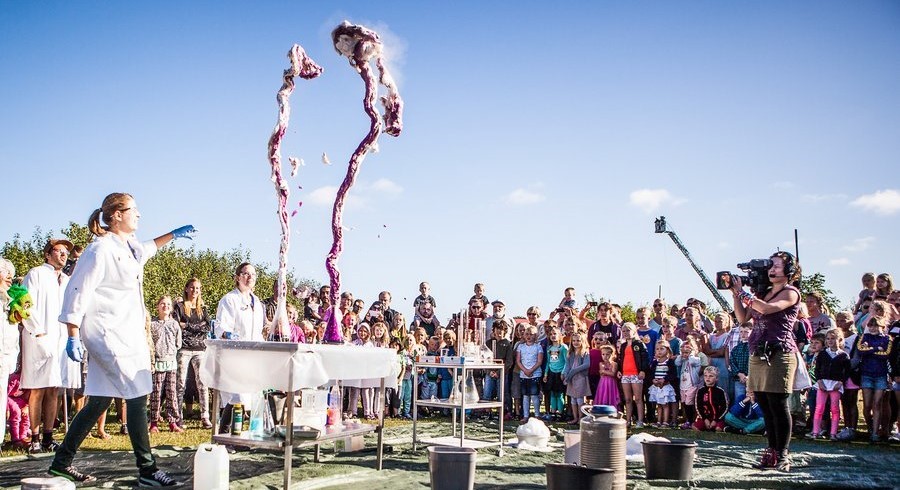Engaging kids
Fat cells, genes, and the code of life

Professor and head of center Susanne Mandrup, from the Center of Excellence Center for Functional Genomics and Tissue Plasticity (ATLAS) at SDU, has contributed educational material to the Ministry of Children and Education, which means that, in the future, students will be able to read about her research on fat cells, genes, and the code of life in the Natural Science course. The material is an introduction to the subjects of her research and was created with the purpose of inspiring students and increasing interest in the field of molecular biology.
Quantum Kate

With the YouTube phenomenon Quantum Kate, the Quantum Rascals Outreach Program of the DNRF’s Centre for Cosmology and Particle Physics Phenomenology (CP3 – Origins) introduces kids, students, and the public at large to the fascinating world of quantum physics and the mysteries embedded in this science. With these initiatives, the CP3 staff has managed to significantly increase the number of physics students at the University of Southern Denmark (SDU) and enlighten us all. Quantum Kate can now also be experienced in AR.
The Anthunt

The Center for Macroecology, Evolution and Climate (CMEC) has conducted a popular Citizen Science project for kids called The Anthunt, where kids between the ages of 3 and 11, using a kit provided by CMEC, collected ants with various foods. More than 17.000 ants, or 26 species, were collected, helping to provide a detailed picture of what determines ant diversity. With the data collected from the kids’ hunts, the researchers from CMEC investigated the ants’ favorite food in Denmark in comparison with ants in the rest of the world.
You can find more information about the Anhunt at Danish Natural History Museum here
Finn Foton og Kvantefysikken (Finn Foton and Quantum Physics)

Finn Foton and Quantum Hhysics (Finn Foton og Kvantefysikken) is a children’s book written in a collaboration between writer Jan Egesborg and scientists Ulrich Busk Hoff and Ulrik Lund Andersen, from the Center for Macroscopic Quantum States (BigQ). The book explains quantum physics for children using humorous illustrations and a story about the boy Finn Photon and his experiments with the key concepts of quantum physics: superposition and entanglement. The books series consists of three books with the latest Finn Foton and the Oceans’ Climate Fight being published in November 2020.
Find more information about Finn and his Quantum universe here
Explore the Ocean 2.0

Explore the Ocean 2.0 is a teaching project from CMEC in collaboration with the World Wildlife Fund (WWF), where volunteer divers (ranging from kids to adults) are asked to collect biological knowledge about the ocean and marine life in Danish waters. The findings collected by the volunteer divers will be compared with those of professionals and in that way decide whether volunteers can manage parts of the marine observations in Denmark.
Chemistry Show

The lab manager at the DNRF Center for Materials Crystallography (CMC), Peter Hald, runs a chemistry show at schools. In the show, among other things, he generates hydrogen from electrolysis of water and fires a cannon in which he collects the hydrogen. He has developed an advanced, self-built automatic marshmallow-roasting device that is very popular in the chemistry shows.
Visit the Ole Rømer Observatory

At the 100-year-old Ole Rømer Observatory, located just outside the city center of Aarhus, the DNRF’s Stellar Astrophysics Centre (SAC) invites school kids and the public into the historic observatory from September to April, to explore the fascinating world of astronomy. Here, schoolkids, among others, are offered a guided tour inside the observatory with small lectures and presentations of the telescopes, and, if the weather allows it, one can have a look at the night sky through the observatory’s 11” large telescope.
For more information about the observatory click here (in Danish)
